Thế giới động vật vô cùng đa dạng được chia thành rất nhiều nhóm động vật khác nhau như: chim, động vật có vú, lưỡng cư, bò sát, cá, v.v… Bài viết này, duhoctms.edu.vn sẽ giới thiệu cho bạn 220 từ vựng về tiếng Anh về động vật (Animals Vocabulary) thường được sử dụng trong các tình huống hội thoại.
1. Danh sách 220 Animals Vocabulary
1. Bear /beər/: Gấu
Ví dụ: They saw a bear while they were running.
2. Chimpanzee /tʃɪmpənˈzi/: Hắc tinh tinh
Ví dụ: Common characteristics of motor patterns were observed across the tasks between both infant chimpanzees and 1-year-old infants.
3. Elephant /ˈelɪfənt/: Voi
Ví dụ: Measures must be taken to protect the world’s depleted elephant population.
4. Fox /fɑːks/: Cáo
Ví dụ: The hunt chased the fox until it was too tired and weak to run and then closed in for the kill.
5. Giraffe /dʒɪˈrɑːf/: Hươu cao cổ
Ví dụ: The giraffe was killed with a spear that had been tipped with poison.
6. Hippopotamus /ˌhɪpəˈpɑːtəməs/: Hà mã
Ví dụ: A notable exception to the above generalization is the hippopotamus, which grazes on swamp vegetation and causes considerable damage to trampled plants by its enormous body weight.
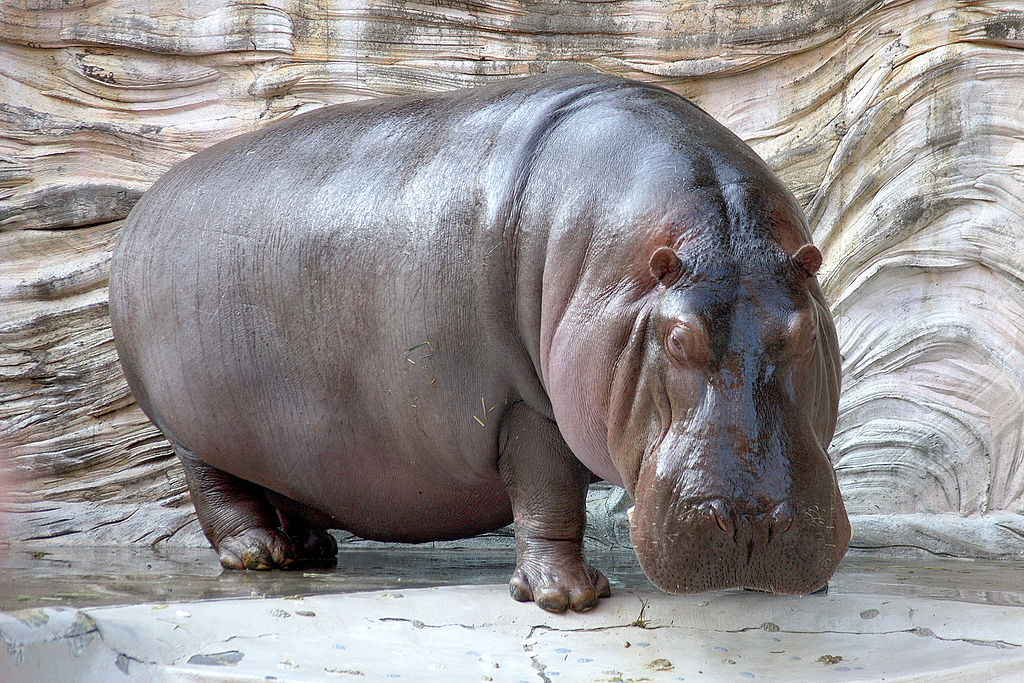
7. Jaguar /ˈdʒæɡjuər/: Báo đốm
Ví dụ: One vulture stands on the back of a jaguar; the animal beneath the other vulture is not preserved.
8. Lion /ˈlaɪən/: Sư tử
Ví dụ: I tell of Hercules’twelve labors, like the nemean lion, the apples of the hesperides, the belt of hippolyta with its buxom naked Amazons and exciting bondage.
9. Porcupine /ˈpɔːrkjupaɪn/: Nhím
Ví dụ: Damage to immature plants by rodents and porcupine was also recorded at some locations.
10. Raccoon /rækˈuːn/: Gấu mèo
Ví dụ: In our analysis, the monthly counts of raccoons testing positive were associated with the risk of a cat testing positive.
11. Rhinoceros /raɪˈnɒsərəs/: Tê giác
Ví dụ: In other words, they enacted (5a) non-causatively, moving the elephant by itself, and enacted (5b) causatively, making the rhinoceros push the beetle.
12. Squirrel /ˈskwɜːrəl/: Sóc
Ví dụ: Captive agoutis and squirrels readily ate larvae when presented without the surrounding endocarp, and preferred larvae to seeds.
13. Crocodile /ˈkrɒk.ə.daɪl/: Cá sấu
Ví dụ: You can appease and appease crocodiles, but eventually they will swallow you up.
14. Alligator /ˈæl.ɪ.ɡeɪ.tər/: Cá sấu (Mỹ)
Ví dụ: There are sharks in the water, alligators on the island, and a hidden explosive in the boat.
15. Bat /bæt/: Dơi
Ví dụ: Where possible the presence of fruit bats was confirmed visually, with the aid of a torch, or sunlight directed by a small mirror.
16. Deer /dɪər/: Hươu
Ví dụ: The simplest explanation for the association is that these bones belonged to parts of deer carcasses deposited with the burial as grave goods.
17. Wolf /wʊlf/: Chó sói
Ví dụ: In the silence of the night, a lone wolf howled.
18. Beaver /ˈbiːvər/: Hải ly
Ví dụ: A dog died during surgery after being bitten by a beaver in 2010 at University Lake in Alaska, where a number of unprovoked attacks against pets were recorded.
19. Chipmunk /ˈtʃɪpmʌŋk/: Sóc chuột
Ví dụ: Interestingly, the reservoir potential of eastern chipmunks appears to differ from region to region.
20. Dolphin /ˈdɒlfɪn/: Cá heo
Ví dụ: There was no program for the labeling of shrimp products which are turtle friendly, as is the case with dolphin friendly tuna.
21. Shark /ʃɑːk/: Cá mập
Ví dụ: We could see the fin of a shark as it slowly circled our boat.
22. Whale /weɪl/: Cá voi
Ví dụ: Whales were sighted occasionally and the boats were lowered on several occasions, but no whales were taken.
23. Swordfish /ˈsɔːdfɪʃ/: Cá kiếm
Ví dụ: An exception is the swordfish, reported here to be parasitized by this species at a relatively high level.
24. Walrus /ˈwɔːlrəs/: Hải mã
E.g: Most of the dated archaeological finds are bone or tusk fragments, but a few are artefacts made of walrus tusk.
25. Penguin /ˈpeŋɡwɪn/: Chim cánh cụt
Ví dụ: For both voyages samples of penguin guano had profuse growth.
26. Turtle /ˈtɜːtl/: Rùa
Ví dụ: In the turtle visual system, color opponency is found in the first synapse between cones and horizontal cells.
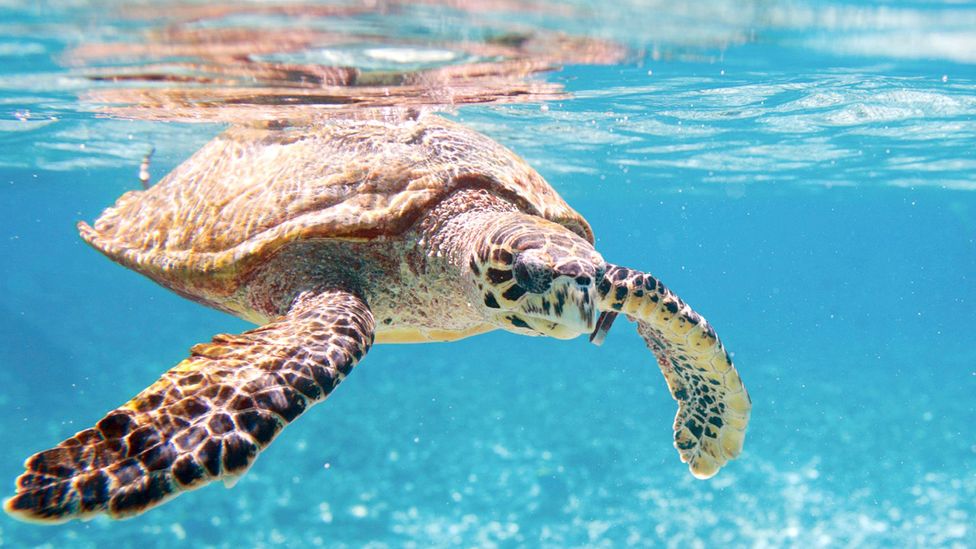
27. Antelope /ˈæn.tɪ.ləʊp/: Linh dương
Ví dụ: In consequence of this, small antelopes may often be seen within the bungalow enclosures.
28. Bee /biː/: Con ong
Ví dụ: My arm swelled up where I was stung by a bee.
29. Cobra /ˈkoʊbrə/: Rắn hổ mang
Ví dụ: Aponomma flavomaculatum is seen also on snakes, especially cobras and pythons.
30. Camel /ˈkæməl/: Lạc đà
Ví dụ: Moreover, the intricacies of herding camels, horses, donkeys, cattle, sheep and goats are simply alluded to in passing, without being investigated.
31. Scorpion /ˈskɔːrpiən/: Bọ cạp
Ví dụ: You held out your hand for an egg, and fate put into it a scorpion.
32. Hedgehog /ˈhedʒ.hɒɡ/: Nhím (kiểng)
Ví dụ: In other words, if a fox only sees other foxes, does it begin to act like a hedgehog?
33. Zebra /ˈzebrə/: Ngựa vằn
Ví dụ: We share more genes with them than zebras do with horses.
34. Moose /muːs/: Nai sừng tấm
Ví dụ: Winter ticks on moose and other ungulates : factors influencing their population size.
35. Donkey /ˈdɔːŋki/: Con lừa
Ví dụ: The last few kilometres had to be covered on donkeys, along a path made almost impassable by the winter rain.
36. Bison /ˈbaɪsn/: Bò rừng
Ví dụ: It is a species that occurs in the abdominal cavity of cattle, buffalo, bison, yak and various species of deer, but rarely in sheep.
37. Llama /ˈlɑːmə/: Lạc đà không bướu
Ví dụ: I have already mentioned llamas, but elephants, deer, rats and goats can all be affected by foot and mouth disease.
38. Jellyfish /ˈdʒel.i.fɪʃ/: Sứa
Ví dụ: Will he stop acting like a quivering jellyfish?
39. Octopus /ˈɑːktəpəs/: Bạch tuộc
Ví dụ: In this study, we localized cytoskeletal and signaling proteins in octopus photoreceptors to determine their concurrence between the lighting conditions.
40. Pufferfish /ˈpʌfərfɪʃ/: Cá nóc
Ví dụ: Species studied include vertebrates with no evidence of imprinting, such as chicken and pufferfish, as well as a number of mammalian species including human, mouse, chimp and dog.
41. Squid /skwɪd/: Mực ống
Ví dụ: Studies of parasites as tags for marine invertebrates have concentrated on squid.
42. Starfish /ˈstɑːrfɪʃ/: Sao biển
Ví dụ: Egg-jelly signal molecules for triggering the acrosome reaction in starfish spermatozoa.
43. Stingray /ˈstɪŋreɪ/: Cá đuối
Ví dụ: As already noted, stingray spines apparently continue to retain venom for some time after becoming detached from the animal.
44. Kangaroo /ˌkæŋɡərˈuː/: Con chuột túi
Ví dụ: They were so out of scale with the rest of her that she looked like a kangaroo.
45. Koala /koʊˈɑːlə/: Gấu túi Koala
Ví dụ: Analysis of koala populations at intermediate geographic distances would be required to assess gene flow accurately.
46. Panda /ˈpændə/: Gấu trúc
Ví dụ: All right, and I’m gonna win you a giant stuffed panda bear.
47. Platypus /ˈplætɪpəs/: Thú mỏ vịt
Ví dụ: There were once hundreds of monotreme species, but there are only five left: four species of echidnas and the duck-billed platypus.
48. Flying squirrel /ˌflaɪ.ɪŋ ˈskwɪr.əl/: Sóc bay
Ví dụ: A flying squirrel can glide about 50 metres.
49. Baboon /bəˈbuːn/: Khỉ đầu chó
Ví dụ: We expected that a large frugivore like the olive baboon disperses seeds of a wide range of sizes undamaged, including large ones.
50. Abalone /æb.əˈləʊ.ni/: Bào ngư
Ví dụ: Among abalone populations, the microbial pressure on the egg surface could be different both spatially and temporally, depending on the habitats and geographical distributions.
51. Anteater /ˈæntˌiː.tər/: Thú ăn kiến
Ví dụ: Around 20 years ago, the giant anteater was seen for the last time by local hunters, but it is extinct today.
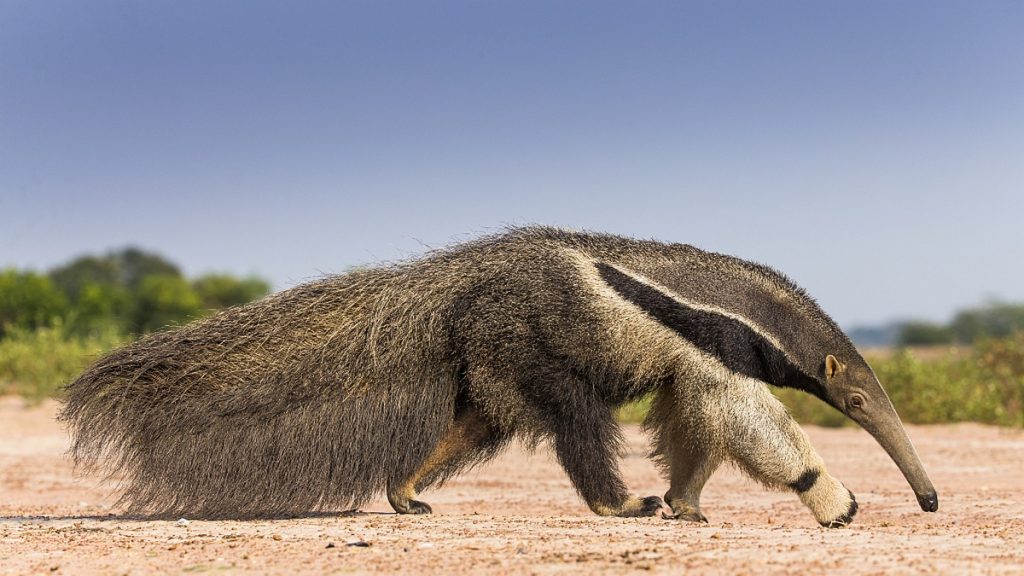
52. Beetle /ˈbiː.təl/: Bọ cánh cứng
Ví dụ: Immediately before slugs were introduced, the drip irrigation system was removed as it could have provided an escape route for the slugs or beetles.
53. Blackbird /ˈblæk.bɜːd/: Con sáo
Ví dụ: I think the argument that small boys will be made criminals if they take a blackbird’s egg or a thrush’s egg is really a bogey.
54. Boar /bɔːr/: Lợn rừng
Ví dụ: Subadult individuals were all black-coated wild boar whose carcass weighed
55. Butterfly /ˈbʌt.ə.flaɪ/: Bươm bướm
Ví dụ: These flowers are brightly coloured in order to attract butterflies.
56. Canary / kəˈneə.ri /: Chim hoàng yến
Ví dụ: My father is gone, now begins the more delicate, more distracted, more hopeless noise led by the voices of the two canaries.
57. Carp /kɑːp/: Cá chép
Ví dụ: Catfish also have a maxilla reduced to a support for barbels; this means that they are unable to protrude their mouths as other fish such as carp.
58. Caterpillar /ˈkæt.ə.pɪl.ər/: Sâu bướm
Ví dụ: This tool alone or combined with others, allows quick detection of parasitized caterpillars in the field.
59. Centipede /ˈsen.tɪ.piːd/: Con rết
Ví dụ: We didn’t cut off the head of the Centipede.
60. Chameleon /kəˈmiː.li.ən/: Tắc kè hoa
Ví dụ: I have a chameleon’s capacity for adaptation.
61. Gecko /ˈɡek.əʊ/: Tắc kè
Ví dụ: Geckoes with high worm burdens may be more easily captured by predators, especially juvenile geckoes.
62. Chamois /ˈʃæm.wɑː/: Sơn dương
Ví dụ: Their passion for hunting chamois.
63. Chihuahua /tʃɪˈwɑː.wə/: Chó chihuahua
Ví dụ: Thus, the basis was laid for the even smaller modern-day Chihuahua.
64. Cicada /sɪˈkɑː.də/: Ve sầu
Ví dụ: Each cicada either sings, chirps, clicks, or is silent depending on its environment and the weather conditions which are modelled by reaction-diffusion patterns.
65. Cockroach /ˈkɒk.rəʊtʃ/: Con gián
Ví dụ: In one project an artificial cockroach has been built that models the original in great detail.
66. Crab /kræb/: Cua
Ví dụ: Of these, only surface soil temperatures had a significant negative relationship with crab abundance.
67. Crane /kreɪn/: Con hạc
Ví dụ: If you look close, it’s this shape, called a crane.
68. Cricket /ˈkrɪk.ɪt/: Con dế
Ví dụ: Initially, they focus on the size of the crickets, as do the hunters.
69. Dachshund / ˈDæk.s ə nd /: Chó Dashshund (chó xúc xích/chó lạp xưởng)
Ví dụ: For example, the dachshund’s small size is caused by a failure of normal development of cartilage, resulting in dwarfism.
70. Dalmatian /dælˈmeɪ.ʃən/: Chó đốm (chó Dalmatian)
Ví dụ: We’ll have a Dalmatian plantation.
71. Dove /dʌv/: Chim bồ câu (họ bồ câu)
Ví dụ: Zebra doves are among the most abundant birds in some places such as Hawaii and the Seychelles.
72. Pigeon /ˈpɪdʒ.ən/: Chim bồ câu (chim)
Ví dụ: We fed the pigeons in the park.
73. Dragonfly /ˈdræɡ.ən.flaɪ/: Con chuồn chuồn
Ví dụ: Scientists have found that the pleats also give the dragonfly greater lift while gliding.
74. Dromedary / ˈDrɒm.ə.d ə r.i /: Lạc đà một bướu
Ví dụ: Most of these camels were dromedaries, especially from India, including the Bikaneri war camel from Rajasthan as a riding camel, and lowland Indian camels for heavy work.
75. Duck /dʌk/: Con vịt
Ví dụ: The horn sounded like a duck quacking
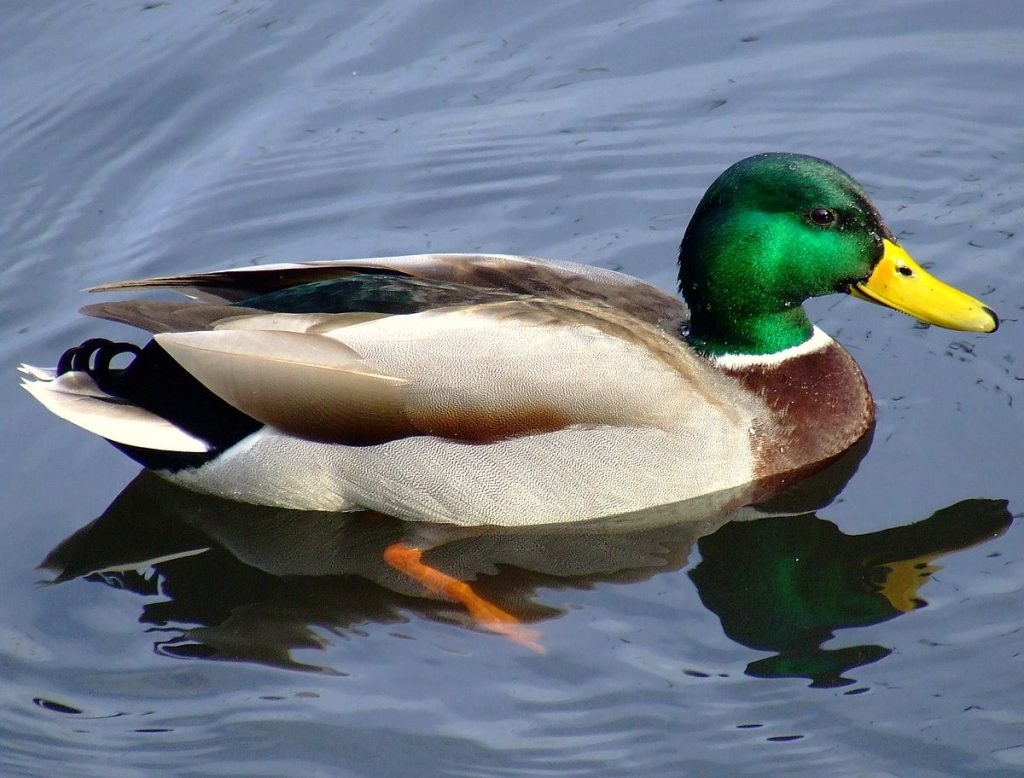
76. Eagle /ˈiː.ɡəl/: Chim đại bàng
Ví dụ: Above the mountain, eagles circled in soundless flight.
77. Eel /iːl/: Con lươn
Ví dụ: Examination of eels on day 112 revealed no indication for acquired immunity resulting from the primary infection.
78. Falcon /ˈfɒl.kən/: Chim ưng
Ví dụ: For these reasons the larvae are considered to be third stage larvae belonging to the same species as the adults described from the saker falcon.
79. Hawk /hɔːk/: Diều hâu
Ví dụ: They did not evolve into hawks or eagles
80. Fawn /fɔːn/: Hươu/nai con
Ví dụ: Although does are excellent mothers, fawn mortality rate is 45 to 70%.
81. Firefly /ˈfaɪə.flaɪ/: Đom đóm
Ví dụ: Crystal structure of firefly luciferase throws light on a superfamily of adenylate-forming enzymes.
82. Flea /fliː/: Bọ chét
Ví dụ: Vibrations caused by human movement liberate adult fleas from pupae hidden in cracks leading to attacks by hungry fleas.
83. Fly / flaɪ /: Con ruồi
Ví dụ: I’ve got a fly without any wings in my cap.
84. Foal /fəʊl/: Ngựa con
Ví dụ: Influence of trace mineral intake of mares on the trace mineral status of their foals.
85. Frog /frɒɡ/: Con ếch
Ví dụ: Are there any species of frog indigenous to the area?
86. Gannet /ˈꞬæn.ɪt /: Chim ó biển
Ví dụ: Its northern boundary is the sea, with wild life ranging from the grey seal to the gannet.
87. Gerbil /ˈdʒɜː.bəl/: Chuột nhảy
Ví dụ: Foraging efficiencies of competing rodents: why do gerbils exhibit shared-preference habitat selection?
88. Gibbon /ˈɡɪb.ən/: Vượn
Ví dụ: According to a preliminary survey the number of gibbons in Nam Kane is substantial, particularly in and around the uninhabited Nam Kan river and its tributaries.
89. Goat /ɡəʊt/: Con dê
Ví dụ: A old woman was herding the goats up the mountainside.
90. Gopher /ˈɡəʊ.fər/: Chuột túi má/chuột nang
Ví dụ: Molecular phylogenies and host-parasite cospeciation : gophers and lice a model system.
91. Grasshopper /ˈɡrɑːsˌhɒp.ər/: Châu chấu
Ví dụ: Some experiments were carried out on this subject with some of the common grasshoppers.
92. Greyhound /ˈɡreɪ.haʊnd/: Chó sắn thỏ
Ví dụ: The crinolined women clustered beneath her seem handmaidens flocking to attend her entrance: even a greyhound follows her queenly progress.
93. Hare /heər/: Thỏ rừng
Ví dụ: Indeed, brown hares are the subject of a biodiversity action plan that aims to maintain and expand their population so that numbers double by 2010.
94. Heron /ˈher.ən/: Con diệc
Ví dụ: The wetland and its surrounding area is an important habitat for egrets and heron and an important wintering ground for many duck species.
95. Hound /haʊnd/: Chó săn
Ví dụ: There is much alarmist rhetoric from those who want to retain hunting with hounds, but as each new study emerges, the arguments are knocked away.
96. Hummingbird /ˈhʌm.ɪŋ.bɜːd/: Chim ruồi
Ví dụ: The maintenance of a costly flowering strategy is probably necessary to guarantee the presence of hummingbirds in the area, the main pollinators.
97. Hyena /haɪˈiː.nə/: Linh cẩu
Ví dụ: Up to 19 spotted hyenas once killed 82 Thomson’s gazelle and badly injured 27, eating just 16%.
98. Iguana /ɪˈɡwɑː.nə/: Kỳ nhông
Ví dụ: I fully agree with what he says about turtles, but he should not confuse them with iguanas.
99. Insect /ˈɪn.sekt/: Côn trùng
Ví dụ: An insect bit me on the arm.
100. Kingfisher /ˈkɪŋˌfɪʃ.ər/: Chim bói cá
Ví dụ: I saw a kingfisher, in all its beauty, moving about over the rivers and marshes and lakes by my home.
101. Ladybug /ˈleɪ.di.bʌɡ/: Bọ rùa
Ví dụ: A threatened ladybug may both play dead and secrete the unappetising substance to protect itself.
102. Lemur /ˈliː.mər/: Vượn cáo
Ví dụ: Unlike the lemurs, this species can cross the gaps between isolated forest fragments and helps to ensure exchange between plant populations.
103. Leopard /ˈlep.əd/: Báo hoa mai
Ví dụ: Have you ever seen a leopard?
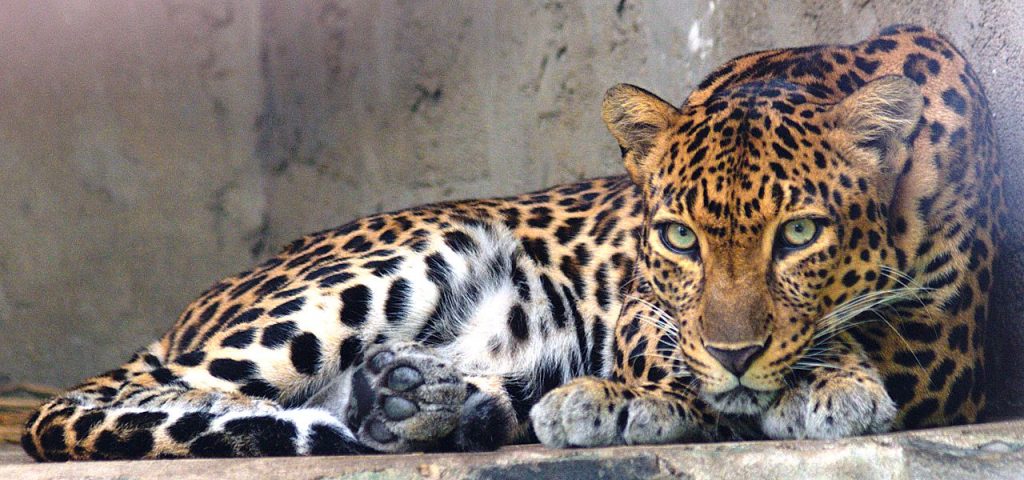
104. Locust /ˈləʊ.kəst/: Cào cào
Ví dụ: During the dry season the locusts could be approached nearer than during the rains, owing to their inactivity when the humidity is low.
105. Lobster /ˈlɒb.stər/: Tôm hùm
Ví dụ: Total allowable catch for managing squat lobster fishery using stochastic nonlinear programming.
106. Shrimp /ʃrɪmp/: Con tôm
Ví dụ: Copious amounts of shrimp are harvested each year in the Gulf of Mexico and the Atlantic Ocean to satisfy a national demand for shrimp.
107. Louse /laʊs/: Con rận
Ví dụ: Individual vintners left almost no direct trails in the government files on the vine louse.
108. Mantis /ˈmæn.tɪs/: Bọ ngựa
Ví dụ: Praying mantis tend to move more slowly and eat less heavily.
109. Mosquito /məˈskiː.təʊ/: Muỗi
Ví dụ: Some types of mosquito transmit malaria to humans.
110. Moth /mɒθ/: Bướm đêm
Ví dụ: Every morning the moths were removed and the paper and cellophane changed.
111. Mule /mjuːl/: Con la
Ví dụ: It is one of the largest donkey breeds, and was selected for size so that it could be used for the production of large working mules, in conjunction with the Poitevin horse breed.
112. Mussel /ˈmʌs.əl/: Con trai
Ví dụ: The detection of cryptosporidial oocysts in mussel tissue harvested for human consumption has obvious implications for human health.
113. Nightingale /ˈnaɪ.tɪŋ.ɡeɪl/: Chim họa mi
Ví dụ: Cysts around the vent opening can result in plugging with dried feces, as in the case of one common nightingale.
114. Orangutan /əˈræŋ.uːtæn/: Đười ươi
Ví dụ: He also went to some of these places to frolic with orangutans and to meet primitive cultures.
115. Ostrich /ˈɒs.trɪtʃ/: Đà điểu
Ví dụ: All the farms surveyed did not have regular deworming programmes for their ostriches.
116. Otter /ˈɒt.ər/: Rái cá
Ví dụ: The soffit of the new bridge incorporates bat bricks, which provide nesting sites for pipistrelle bats and a timber otter run on one bank.
117. Owl /aʊl/: Con cú
Ví dụ: The owl is a predatory bird which kills its prey with its claws.
118. Pangolin /pæŋˈɡəʊ.lɪn/: Con tê tê
Ví dụ: Apart from reptiles, it has been reported from a few mammals, including insectivores, pangolins, rodents and humans.
119. Parakeet /ˌpær.əˈkiːt/: Vẹt đuôi dài
Ví dụ: Before I got my first pet parakeet, I had no idea you could bond with a bird.
120. Parrot /ˈpær.ət/: Con vẹt
Ví dụ: She used to keep a parrot in a cage.
121. Peacock /ˈpiː.kɒk/: Con công
Ví dụ: For all its apparent vanity, the peacock can be very protective.
122. Gazelle /ɡəˈzel/: Linh dương Gazelle
Ví dụ: Most (42.9%) of the parasitized gazelles harboured two nematode species.
123. Cheetah /ˈtʃiː.tə/: Báo săn (báo gê-pa)
Ví dụ: The cheetah in particular has a 50% chance of losing its kills to lions or other predators.
124. Woodpecker /ˈwʊdˌpek.ər/: Chim gõ kiến
Ví dụ: Availability of nesting sites as a limit to woodpecker populations.
125. Sparrow /ˈspær.əʊ/: Chim sẻ
Ví dụ: By the next day, though, the little sparrow was crying regularly to be fed.
126. Finch /fɪntʃ/: Họ sẻ thông
Ví dụ: The researchers found that as the climatic conditions on the island changed, finches with longer beaks were dominant one year, but later those with smaller beaks were dominant.
127. Swan /swɒn/: Thiên nga
Ví dụ: We took some bread to feed the swans.
128. Seagull /ˈsiː.ɡʌl/: Chim mòng biển
Ví dụ: The effect of the use of different selective media on the ability to recover salmonellae from seagull feces.
129. Gull /ɡʌl/: Chim mòng biển
Ví dụ: This species looks distinctly different from other gulls.
130. Shellfish /ˈʃel.fɪʃ/: Động vật có vỏ (nghêu/sò/ốc/hến…)
Ví dụ: The lagoon, immediately to its north, is a rich source of fish, shellfish, turtles, alligators, wild plant foods, and other lacustrine resources.
131. Killer whale /ˈkɪl.ə ˌweɪl/: Cá voi sát thủ
Ví dụ: Killer whales have been observed feeding on basking sharks off California and New Zealand.
132. Orca /ˈɔː.kə/: Cá voi sát thủ/cá heo đen/cá hổ kình
Ví dụ: By experimenting with different temperature distributions in the layered atmosphere, one can discover numerous situations that convert an orca or a walrus into a merman.
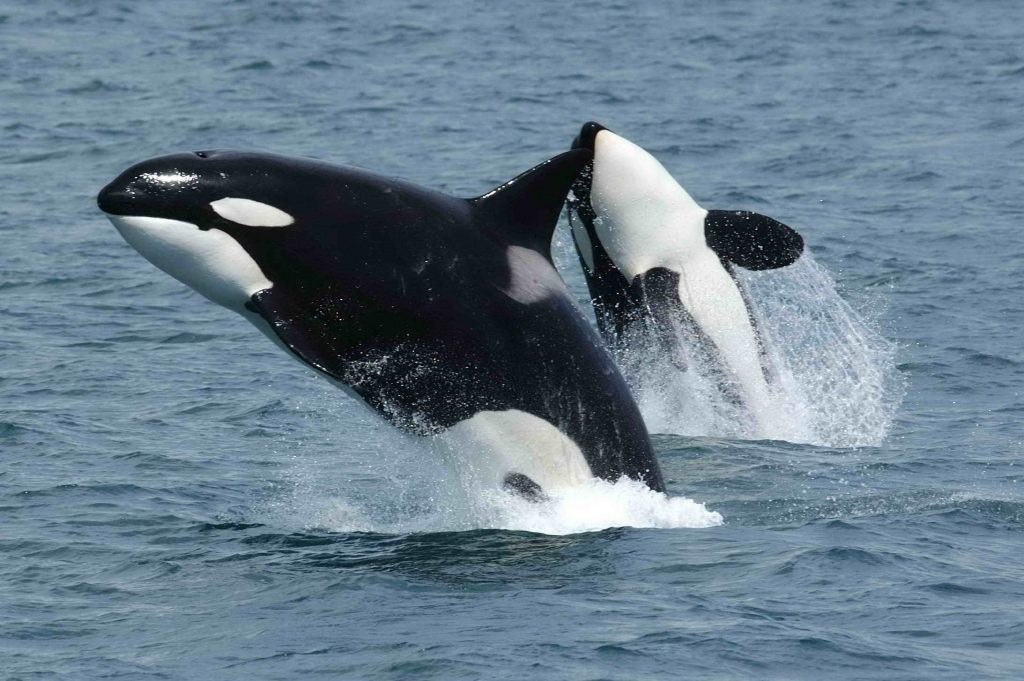
133. Fish /fɪʃ/: Cá
Ví dụ: They were happy because they had caught a lot of fish that day.
134. Seal /siːl/: Hải cẩu
Ví dụ: We spied a seal from the shore.
135. Coral /ˈkɒr.əl/: San hô
Ví dụ: There are new chapters on corals, ser pulid worms and nautiloids, three groups left out of the first edition.
136. Lynx /lɪŋks/: Linh miêu
Ví dụ: Also, there were no significant seasonal differences in abundance when only adult lynx were considered.
137. Polar bear /ˌpəʊ.lə ˈbeər/: Gấu bắc cực
Ví dụ: Both fox and polar bear feces were found on the island.
138. Buffalo /ˈbʌf.ə.ləʊ/: Con trâu
Ví dụ: Somewhere southeast of El Paso in the early 1530s, the shipwrecked wanderer Cabeza de Vaca first saw the buffalo or the American bison.
139. Skunk /skʌŋk/: Chồn hôi
Ví dụ: Skunks and foxes also can be infected with rabies , and a few cases have been reported in wolves , coyotes , bobcats , and ferrets.
140. Parasite /ˈpær.ə.saɪt/: Ký sinh trùng
Ví dụ: The older drugs didn’t deal effectively with the malaria parasite.
141. Toad /təʊd/: Con cóc
Ví dụ: Toads have drier, lumpier skins than frogs and spend less time in the water.
142. Dinosaur /ˈdaɪ.nə.sɔːr/: Khủng long
Ví dụ: Compsognathus was the first dinosaur genus to be portrayed with feathers, by Thomas Henry Huxley in 1876.
143. Dragon /ˈdræɡ.ən/: Rồng
Ví dụ: Instead of mysterious caves, dragons, and romanticized heroes, fantastic factory floors, gigantic machines, and larger than life machinists confront the audience.
144. Lizard /ˈlɪz.əd/: Thằn lằn
Ví dụ: The infection status of 72 % of lizards were correctly classified by our model.
145. Lamb /læm/: Con cừu non
Ví dụ: I’ve bought a shoulder of lamb for Sunday lunch.
146. Chicken /ˈtʃɪk.ɪn/: Con gà
Ví dụ: Defrost the chicken thoroughly before cooking.
147. Piglet /ˈpɪɡ.lət/: Lợn con
Ví dụ: Although the lactation period lasts 2.5–3.5 months, the piglets begin displaying adult feeding behaviors at the age of two–three weeks.
148. Horse /hɔːs/: Con ngựa
Ví dụ: My horse is a bit timid and is easily frightened by traffic.
149. Tadpole /ˈtæd.pəʊl/: Nòng nọc
Ví dụ: In sites where visibility was too poor for observation of tadpoles, such as areas with submerged aquatic vegetation, microhabitats were sampled with a small dipnet.
150. Newt /njuːt/: Sa giông/cá cóc
Ví dụ: Investigations of the whole process of fertilisation in the newt may lead to an understanding of adaptation to the fertilisation mode in amphibians.
151. Snail /sneɪl/: Ốc sên
Ví dụ: In resistant snails, haemocytes infiltrate the tissues surrounding young sporocysts and form multi-layered cellular encapsulations that result in larval destruction within 24-48 hours.
152. Slug /slʌɡ/: Sên
Ví dụ: The poor guy wound up with a slug in his stomach.
153. Spider /ˈspaɪ.dər/: Con nhện
Ví dụ: The spider preys on small flies and other insects.
154. Albatross /ˈæl.bə.trɒs/: Chim hải âu
Ví dụ: The great albatrosses are predominantly white in plumage as adults, with birds becoming whiter as they age.
155. Crow /krəʊ/: Con quạ (họ quạ)
Ví dụ: He can tell you stories in English of the thirsty crow, of the crocodile and of the giraffe.
156. Raven /ˈreɪ.vən/: Con quạ (chim)
Ví dụ: You killed all the ravens.
157. Cuckoo /ˈkʊk.uː/: Chim cu
Ví dụ: They will, indeed, become cuckoos in the nest, which will be very damaging.
158. Pigeon /ˈpɪdʒ.ən/: Chim bồ câu
Ví dụ: Numerous pigeons fed on cereals scattered by passers-by.
159. Flamingo /fləˈmɪŋ.ɡəʊ/: Hồng hạc
Ví dụ: He will recall the difficulties that that has caused us when we have tried to use it to advertise a flamingo park.
160. Goose /ɡuːs/: Con ngỗng
Ví dụ: Do you think that three women and a goose make a market?
161. Robin /ˈrɒb.ɪn/: Chim cổ đỏ
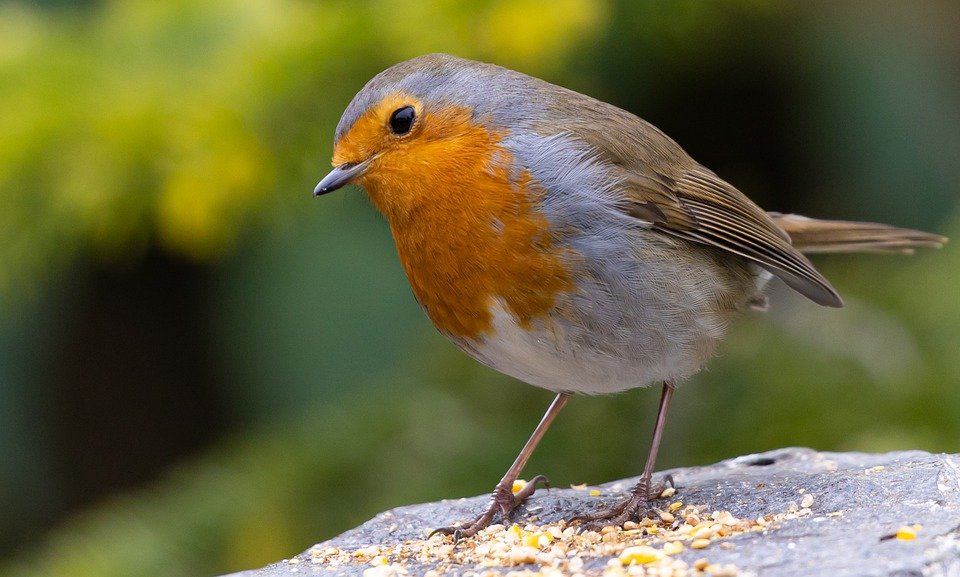
Ví dụ: For example, upon learning that robins are susceptible to a particular disease, it seems plausible that eagles might also be susceptible.
162. Turkey /ˈtɜː.ki/: Con gà tây
Ví dụ: It’s permaculture, those of you who know a little bit about this, such that the cows and the pigs and the sheep and the turkeys and the… what else does he have?
163. Cockatoo /ˌkɒk.əˈtuː/: Con vẹt mào
Ví dụ: The croaking cockatoo doth bellow for revenge.
164. Cod /kɒd/: Cá tuyết
Ví dụ: Cod and chips, please.
165. Goldfish /ˈɡəʊld.fɪʃ/: Cá vàng
Ví dụ: The size of the horizontal cell receptive fields adapts to the stimulus in the light adapted goldfish retina.
166. Perch /pɜːtʃ/: Cá rô
Ví dụ: They are collectively called ruffes and resemble the common perches (Perca), but are usually smaller and have a different pattern.
167. Plaice /pleɪs/: Cá bơn
Ví dụ: Flounders and plaice (15+24 cm long) were used as experimental final hosts.
168. Ray /reɪ/: Cá đuối
Ví dụ: I saw a manta ray that looked as big as the plane I was flying in.
169. Salmon /ˈsæm.ən/: Cá hồi
Ví dụ: Thousands of young salmon have been killed by the pollution.
170. Trout /traʊt/: Cá hồi (nước ngọt)
Ví dụ: Five thousand trouts are set out each year to sustain the population.
171. Scallop /ˈskɒl.əp/: Con sò
Ví dụ: Blockade of light-sensitive conductance in hyperpolarizing photoreceptors of the scallop.
172. Herring /ˈher.ɪŋ/: Cá trích
Ví dụ: The infection among young-of-the-year herring was observed only during summer 1992.
173. Minnow /ˈmɪn.əʊ/: Cá tuế
Ví dụ: The larvae were not an accidental or occasional infection in minnows, but were present in both rivers throughout the year.
174. Sardine /sɑːˈdiːn/: Cá mòi
Ví dụ: Sardines used to be preserved in brine for sale in rural areas.
175. Clam /klæm/: Ngao
Ví dụ: Sure, just not as much as clams.
176. Seahorse /ˈsiː.hɔːs/: Cá ngựa
Ví dụ: I found a dried-up seahorse.
177. Ant /ænt: Kiến
Ví dụ: We’ve got ants in our kitchen.
178. Aphid /ˈeɪ.fɪd/: Con rệp
Ví dụ: Unlike spotted alfalfa aphid, vein chlorosis was not observed after spotted clover aphid feeding in this experiment.
179. Larva /ˈlɑː.və/: Ấu trùng
Ví dụ: A single leaf was placed in each pot containing larvae and this was replaced every second day.
180. Wasp /wɒsp/: Ong vò vẽ
Ví dụ: She had a puncture wound in her arm, from a wasp sting.
181. Badger /ˈbædʒ.ər/: Con lửng
Ví dụ: Ferrets are preyed on by coyotes, raptors, badgers and skunks.
182. Elk /elk/: Nai sừng xám
Ví dụ: We hunted elk, deer, and moose for food and for their skins.
183. Guinea pig /ˈɡɪn.i ˌpɪɡ/: Chuột lang
Ví dụ: Indeed in my studies I was a guinea pig for a pharmaceutical industry.
184. Mammoth /ˈmæm.əθ/: Voi ma mút
Ví dụ: Is it safe to attract the mammoths without seeing to that?
185. Mink /mɪŋk/: Con chồn
Ví dụ: There was no ministerial voice to press the case for mink control.
186. Puma /ˈpjuː.mə/: Báo sư tử
Ví dụ: In Latin America, the fast-growing & emerging economies, oriented to free trade & free market development are called the Pacific Pumas of which consist of Mexico, Chile, Peru & Colombia.
187. Reindeer /ˈreɪn.dɪər/: Tuần lộc
Ví dụ: The mission school included a programme of economic self-sufficiency through the introduction of domestic reindeer husbandry.
188. Sloth /sləʊθ/: Con lười
Ví dụ: Big game, including bison, mammoths and ground sloths, also were attracted to these water sources.
189. Coyote /kaɪˈəʊ.ti/: Sói đồng cỏ
Ví dụ: Suddenly a large male coyote walked out of the trees.
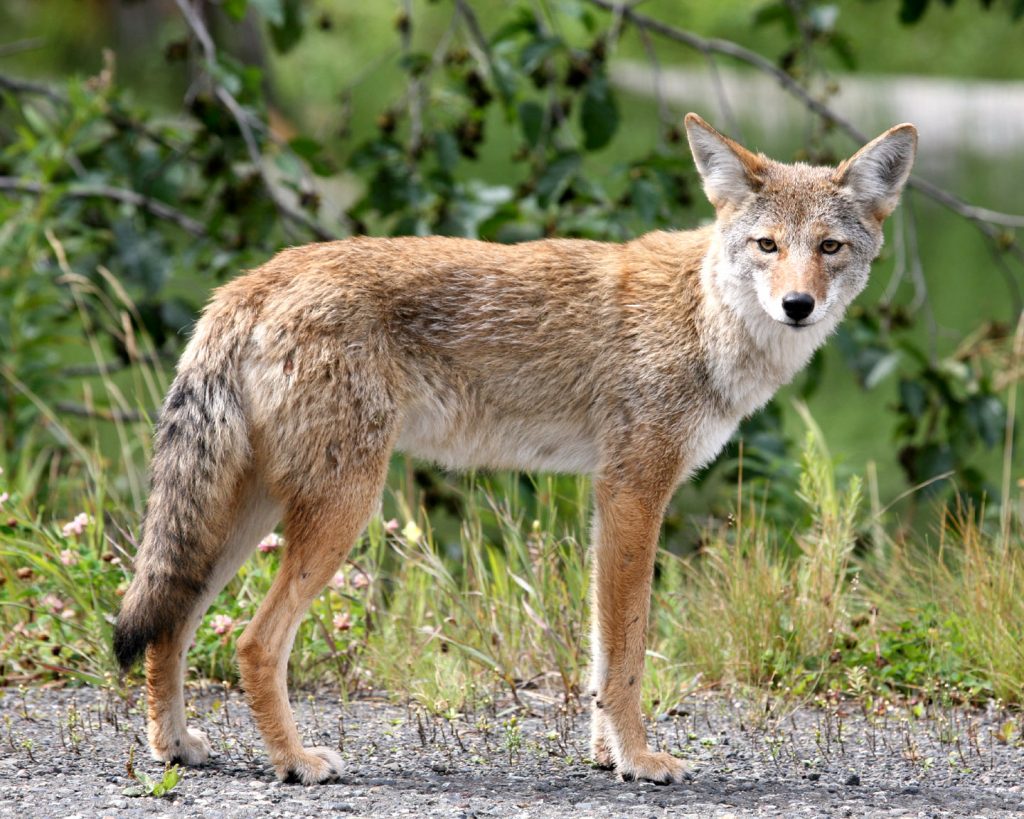
190. Yak / jæk /: Bò Tây Tạng
Ví dụ: A small population lived chiefly off yak herding and barley growing, leaving fields fallow for long periods to prevent leaching and erosion.
191. Gorilla /ɡəˈrɪl.ə/: Khỉ đột
Ví dụ: With respect to faecal clumps that contained whole seeds, chimpanzees and gorillas passed 1.7 species of seed per defecation on average.
192. Snake /sneɪk/: Con rắn
Ví dụ: The snake coiled itself tightly around the deer.
193. Python /ˈpaɪ.θən/: Con trăn
Ví dụ: Seasonal differences in body condition of water pythons mirrored the results for feeding rates.
194. Pig /pɪɡ/: Con lợn
Ví dụ: These pigs all have curly tails.
195. Sheep /ʃiːp/: Con cừu
Ví dụ: Sheep were grazing in the fields.
196. Cock /kɒk/: Con gà trống
Ví dụ: The comb is single with 5 to 7 points, smaller in hens than in cocks.
197. Hen /hen/: Con gà mái
Ví dụ: “Having calculated all the lime in oats fed to a hen, found still more in the shells of its eggs.
198. Chick /tʃɪk/: Gà con
Ví dụ: He’s got some f-ing fangbanger chick with him.
199. Cat /kæt/: Con mèo
Ví dụ: I usually feed the neighbour’s cat while she’s away.
200. Dog /dɒɡ/: Con chó
Ví dụ: I grabbed the dog by the collar and dragged it out of the room.
201. Rabbit /ˈræb.ɪt/: Con thỏ
Ví dụ: They have several pets – a dog, two rabbits and a guinea pig.
202. Calf /kɑːf/: Con bê
Ví dụ: We will make of them a golden calf!
203. Clownfish /ˈklaʊn.fɪʃ/: Cá hề
Ví dụ: In turn, the anemone provides the clownfish with shelter.
204. Water buffalo /ˈwɔː.tə ˌbʌf.ə.ləʊ/: Trâu nước
Ví dụ: His authoritative works on the wild water buffalo have been published recently as the first monograph on this endangered species.
205. Mouse /maʊs/: Chuột
Ví dụ: A mouse has nibbled through the computer cables.
206. Rat /ræt/: Chuột cống
Ví dụ: In biology classes at school we used to dissect rats.
207. Mountain goat /ˌmaʊn.tɪn ˈɡəʊt/: Dê núi
Ví dụ: Mountain goats live among the steep slopes of the Rocky Mountains.
208. Bird /bɜːd/: Chim
Ví dụ: Most birds lay eggs in the spring.
209. Puppy /ˈpʌp.i/: Cún con/chó con
Ví dụ: Our dog has just had four puppies.
210. Kitten /ˈkɪt.ən/: Mèo con
Ví dụ: We even join in the playful antics of our puppies and kittens.
211. Hamster /ˈhæm.stər/: Chuột hamster/chuột đuôi cụt
Ví dụ: We found that such electric pulses frequently caused lysis of hamster oocytes.
212. Stork /stɔːk/: Con cò
Ví dụ: It reminded me of the fable of the stork inviting the fox to dinner.
213. Bald eagle /ˌbɔːld ˈiː.ɡəl/: Đại bàng đầu trắng
Ví dụ: Plucking a bald eagle.
214. Swallow /ˈswɒl.əʊ/: Chim én
Ví dụ: Barn swallows in Hong Kong, 2004.
215. Pelican /ˈpel.ɪ.kən/: Bồ nông
Ví dụ: Both pelican and porcupine will spend the night among her pillar capitals.
216. Sea urchin /ˈsiː ˌɜː.tʃɪn/: Nhím biển
Ví dụ: In animal systems, studies on the activation of sea urchin and clam eggs have also found changes in enzyme activity and location.
217. Cormorant /ˈkɔː.mər.ənt/: Chim cốc
Ví dụ: Our objectives were to examine both intra- and interspecific density-dependent effects on worm sizes among the 3 helminth species found in cormorants.
218. Sea anemone /ˈsiː əˌnem.ə.ni/: Hải quỳ
Ví dụ: Or maybe we are struck by its surprising choice of home—among the stinging tentacles of a sea anemone.
219. Sea lion /ˈsiː ˌlaɪ.ən/: Sư tử biển
Ví dụ: I agree that the sea lion is a mammal of different dimensions from the dolphin, for example.
220. Worm /wɜːm/: Giun
Ví dụ: It’s distressing enough to find a worm in your apple but finding half of one is worse.
Tải ngay tài liệu học Animals Vocabulary tại đây:
2. Bài tập về Animals Vocabulary
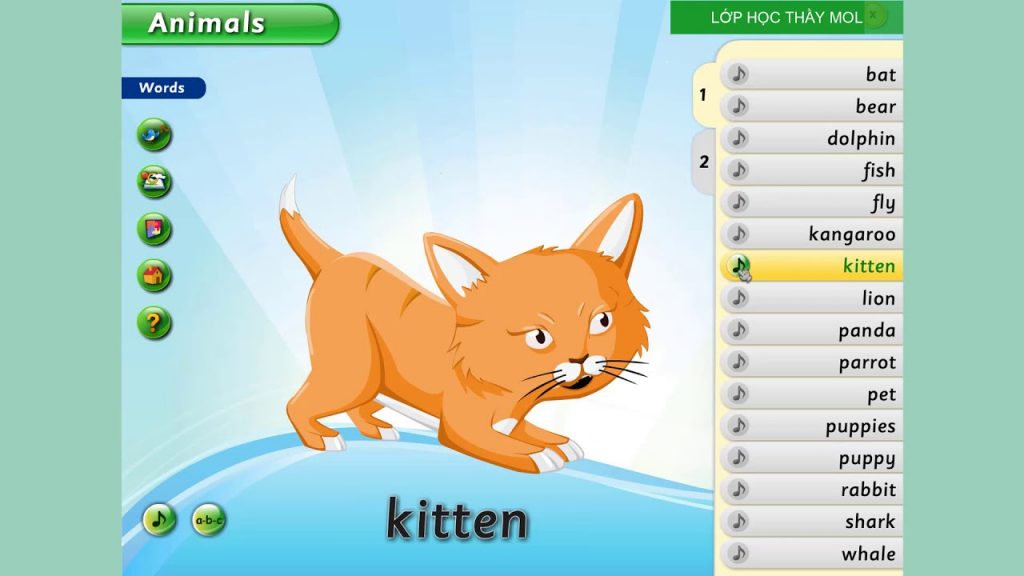
Phần bài tập
Exercise 1: Circle the correct answers.
- Vivisection/Poaching is an act of carrying out experiments on animals.
- Instrumental/Sustainable tourism is the concept of visiting somewhere as a tourist and trying to make a positive impact on the environment, society, and economy.
- They are cutting down on air travel in an effort to improve their green biodiversity/credentials.
- It is unclear how to mitigate/poach the effects of tourism on the island.
- Some people believe that killing animals for sport is barbaric/sustainable and brutal.
Exercise 2: Fill in each blank with ONE word.
- There are 13 species in this area that are teetering ________ the brink of extinction.
- Poaching has posed a serious threat ________ antlers in this area.
- Wild animals living________ captivity are reported to be weakened.
- Farmers encroach ________ forest land to grow crops.
- Experiments on cows were ________ in developing the vaccine that eliminated smallpox worldwide
Exercise 3: Fill in each blank with ONE word from the given list. You may need to change the word form if necessary.

- Sundance is emphasizing its green _________ more than ever this year.
- My firm conviction is that vivisection must be _________ at all cost.
- New houses were built, _________ on the land where there once was a lot of trees.
- To do so you would have to keep careful pedigree records of caddises bred in _________, and breeding them is difficult.
- The natural habitats have been _________ on an unprecedented scale.
Exercise 4. Look at the photos and watch or listen to three conversations. Which animal is correct for each conversation?
(Nhìn vào các bức ảnh và xem hoặc nghe ba cuộc trò chuyện. Con vật nào đúng cho mỗi đoạn hội thoại?)
Nội dung bài nghe:
1. Simon
Girl: Hi, Simon. Do you want to play our animal identification game?
Simon: Sure.
Girl: Okay. Look at the photo. What do you think it is?
Simon: I’ve got no idea. It looks like a frog. Is it a frog?
Girl: No, it isn’t. In fact, it’s a kind of fish.
Simon: Really? That’s a very strange fish.
2. Ray
Girl: Hi, Ray. Do you want to play an animal identification game?
Ray: Yes, okay.
Girl: Okay, listen to this please. What animal do you think this is?
Ray: I don’t know. It sounds like a dog.
Girl: Listen again.
Ray: I know I. Is it a wolf?
Girl: Yes, it is.
3. Lane
Boy: Hi, Lane. Would you like to play an animal identification game?
Lane: Yes, why not?
Boy: Okay. Listen and tell us what animal you here.
Lane: Right. … That’s a strange sounds. I’ve got no idea. Maybe it’s the elephant?
Boy: No it’s a camel.
Phần đáp án
Exercise 1
| 1. Vivisection | 2. Sustainable | 3. credentials |
| 4. mitigate | 5. barbaric | 6. instrumental |
Exercise 2
| 1. on | 2. on | 3. in | 4. on | 5. instrumental |
Exercise 3
- credentials
- abolished
- encroaching
- captivity
- shrinking
Exercise 4
| 1. a fish (cá) | 2. a wolf (sói) | 3. a camel (lạc đà) |
3. Một số câu hỏi thường gặp cho chủ đề Animals
1. Wild animals have no place in the 21st century, and the protection is a waste of resources. To what extent do you agree or disagree?
2. Some people feel that it is always wrong to keep animals in captivity, for instance in zoos. Other people say that there are benefits for animals and for humans. Discuss both views and give your own opinion.
3. Nowadays animal experiments are widely used to develop new medicines and to test the safety of other products. Some people argue that these experiments should be banned because it is morally wrong to cause animals to suffer, while others are in favor of them because of their benefits to humanity. Discuss both views and give your own opinion.
4. Far too little has been done to prevent animals and plants from dying out, although people have been aware of this problem for a long time. Why do people do so little about it? Give your suggestions on how to solve this problem.
5. The movement of people from agricultural areas to cities to work can cause serious problems in both places. What are the serious problems and what measures can be taken to solve this problem?
Trên đây là danh sách 220 Animals Vocabulary mà duhoctms.edu.vn đã tổng hợp được. Nếu các bạn có những bổ sung nào khác thì hãy để lại bình luận cho mọi người cùng biết nhé! Chúc các bạn học tốt tiếng Anh.
Xem thêm các bài viết khác:

Bình luận